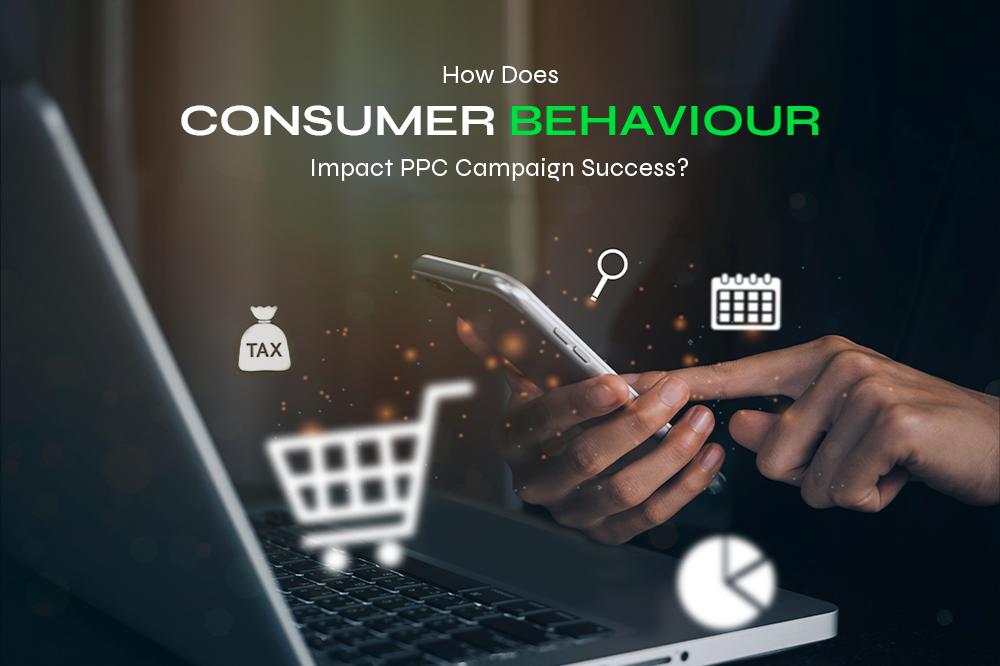
Have you noticed how our entire world operates within a digital arena? From connecting with others to advertising products, everything now happens online. It's how brands expand their reach and tap into new audiences efficiently. A well-executed pay-per-click (PPC) campaign can be the key to unlocking a treasure trove of potential customers. However, the true secret to PPC success lies not just in savvy bidding strategies or flashy ad creatives, but in a deep understanding of the intricate psychological forces that shape consumer behaviour.
At its core, consumer psychology explores the multifaceted factors that influence how individuals perceive, process, and respond to marketing stimuli. By tapping into these powerful subconscious drivers, businesses can craft PPC campaigns that resonate on a profound emotional level, captivating their target audience and igniting a burning desire to click, convert, and ultimately, become loyal brand advocates.
Copywriting is the art of creating linguistic supremacy through carefully chosen words that hold the power to influence and motivate the readers.
For instance, consider an ad for a luxury timepiece that reads: "Precision. Elegance. Timeless." This triad of descriptors paints a vivid mental picture and imbues the product with an aura of exclusivity and desirability.
Similarly, the "scarcity principle" can be harnessed to create a sense of urgency and heighten perceived value. By strategically incorporating phrases like "limited edition" or "only X remaining," advertisers can tap into the deep-rooted human fear of missing out, compelling consumers to act swiftly and decisively.
While words hold immense power, the impact of visuals on consumer psychology cannot be overstated. When it comes to performance marketing agencies for PPC advertising, visuals serve as the initial hook, capturing attention and shaping first impressions within mere seconds.
Integrating visuals that evoke primal instincts, such as the desire for status, security, or social acceptance, can be an incredibly potent strategy. For example, an ad featuring a sleek, high-performance vehicle could trigger subconscious associations with success, power, and prestige, tapping into the innate human drive for social dominance.
Colour psychology also plays a pivotal role, with different hues eliciting distinct emotional and psychological responses. Warm tones like red and orange can stimulate feelings of excitement and urgency, making them ideal for promotional or limited-time offers. In contrast, cooler shades like blue and green can convey a sense of trustworthiness and stability, resonating well with industries like finance or healthcare.
Even the most compelling ad creative will fall flat if not presented to the right audience at the opportune moment. This is where precise targeting strategies rooted in consumer psychology become invaluable.
Leveraging demographic data, browsing behaviours, and past purchasing patterns can provide invaluable insights into the motivations, pain points, and desires of specific consumer segments. Armed with this knowledge, advertisers can tailor their messaging, visuals, and targeting to align seamlessly with the psychological profiles of their ideal customers.
For instance, a fashion retailer might target affluent urban professionals with ads emphasising style, sophistication, and convenience, tapping into their desire for social status and efficient lifestyles. Conversely, a home improvement brand could resonate better with suburban homeowners by highlighting themes of family, security, and long-term investment.
Crafting compelling ad content and reaching the right audience are merely the first steps in the PPC journey. The ultimate goal is to nudge consumers toward the desired action, be it clicking, converting, or ultimately, making a purchase.
Enter the world of persuasion psychology, which encompasses a vast array of techniques designed to subtly guide decision-making processes. One powerful strategy is the "foot-in-the-door" approach, where consumers are initially presented with a small, relatively easy-to-follow request (such as signing up for a newsletter or downloading a free resource). Once they've committed to this initial action, they become more likely to give in to larger subsequent requests, like making a purchase.
Mastering the art of consumer psychology in PPC advertising is not a one-time endeavour but rather a continuous process of experimentation, analysis, and refinement. By closely monitoring key metrics like click-through rates, conversion rates, and cost-per-acquisition, businesses can gain invaluable insights into what resonates with their target audience and what falls flat.
Leveraging advanced analytics tools and A/B testing methodologies, advertisers can systematically tweak and optimise every aspect of their campaigns, from ad copy and visuals to targeting parameters and bidding strategies. This data-driven approach not only maximises the immediate return on investment but also contributes to a deeper understanding of consumer psychology over time.
In today's rapidly shifting digital marketing arena, those who embrace the profound influence of consumer psychology on PPC success will undoubtedly hold a distinct competitive advantage. By masterfully combining persuasive storytelling, visually captivating creatives, and surgical targeting that taps into core human motivations, these companies don't merely sell products—they forge powerful emotional bonds with their audiences.
Read as well: How to connect B2B brands with their Audience
So, the next time you craft a PPC campaign, remember: it's not just about selling a product or service; it's about seducing the human mind with an irresistible blend of art, science, and psychological mastery.
 Rise of Generative AI in Production Media- Impact and Future
Rise of Generative AI in Production Media- Impact and Future
 A Guide to Successful Digital Performance Marketing
A Guide to Successful Digital Performance Marketing
 How Does Consumer Behaviour Impact PPC Campaign Success?
How Does Consumer Behaviour Impact PPC Campaign Success?